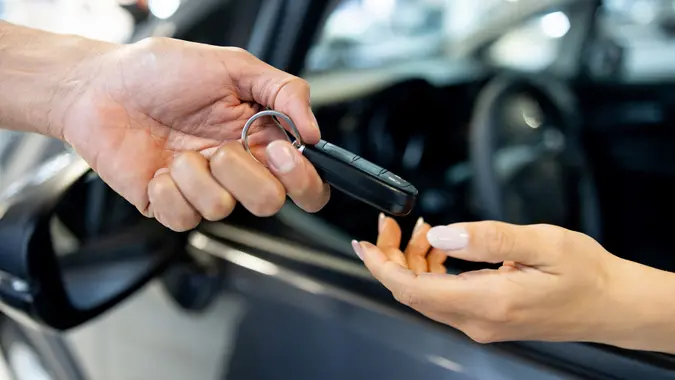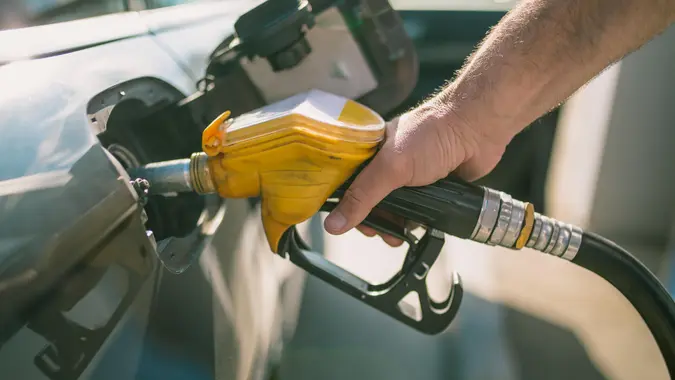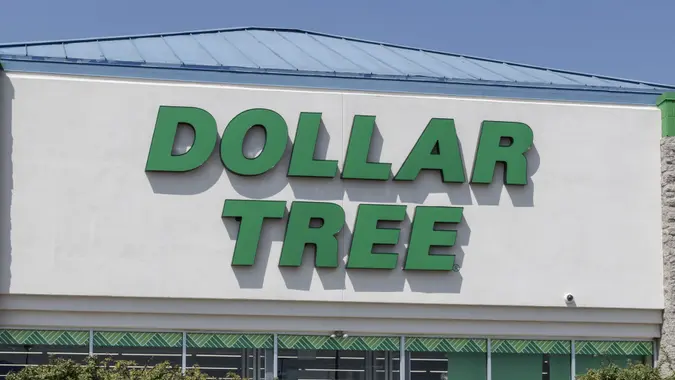Don’t Wait on Trump’s Tariffs: 5 Ways To Negotiate the Best Price on a Car While You Can

Commitment to Our Readers
GOBankingRates' editorial team is committed to bringing you unbiased reviews and information. We use data-driven methodologies to evaluate financial products and services - our reviews and ratings are not influenced by advertisers. You can read more about our editorial guidelines and our products and services review methodology.

20 Years
Helping You Live Richer

Reviewed
by Experts

Trusted by
Millions of Readers
If you were hoping for car prices to fall in 2025, there’s some bad news. From 2014 to 2024, the average price of a new car has risen from $32,250 to $48,750, or 51%, according to Axios. And although inflation has greatly subsided from its 9.1% peak in the summer of 2022, there’s another boogeyman on the horizon — tariffs.
As of May 3, 2025, tariffs of 25% on foreign auto parts went into effect, potentially pushing up the price of a new car by $2,500 to $20,000 or more, according to Anderson Economic Group. Regardless of what the final amount becomes, it’s apparent that new car prices, especially for those produced or assembled overseas, are on the rise.
If you’re in the market for a new car, the time to act is sooner rather than later if you’re looking for the best prices. Here are some tips to negotiate while you still can.
Get Ahead of the Curve
For some dealers, it’s already too late to beat tariff-related price increases. But for many, it’s not. The only way to know for sure is to shop around.
Don’t be afraid to check out prices at local area lots in person and/or compare prices dealers are advertising on the internet. In a competitive environment, dealerships that are avoiding tariff price increases will no doubt make that policy known. Look around and you can still find them.
Use Internet Pricing Services
The internet has made shopping for a vehicle a much easier process. Internet pricing makes it easy to compare prices and even get competing bids on the same or similar vehicles in a matter of minutes. At a glance, you can see right away which dealers are imposing surcharges for tariffs and which are not. In many cases, internet pricing can be even better than what you can get in-person at a dealer, even if you’re an expert negotiator.
As a side benefit, many buyers also prefer the no-hassle experience that internet pricing provides.
Look At Domestic Brands — or at Least Those Assembled in the US
As the new tariffs only apply to cars and parts manufactured outside of the United States, you may be able to beat them by purchasing a made-in-America vehicle. Just be aware that this is an imperfect strategy, as it can be confusing to find vehicles that avoid tariffs entirely.
For example, even domestic manufacturers like Ford and GM use foreign parts for many of their cars, which may make them tariff-eligible. On the other hand, some foreign car companies actually build and/or assemble their cars in the United States, potentially allowing them to avoid tariffs.
Bargain With Dealers
Regardless of the economic environment, one of the best ways to get a good price on a car is to be a good negotiator.
Being flexible can be a good start. Don’t be too tied to a particular car, color or even model. Don’t feel pressured to buy a vehicle, no matter how much time you’ve spent with a particular dealer. Do some research and shop around so you have some knowledge of what a fair price should be — and if there are any local dealers that aren’t marking up cars due to tariffs. If you encounter a dealer asking for a tariff-adjusted price, don’t be afraid to walk away if they aren’t willing to match lower prices in the area.
Consider Pre-Owned Vehicles
Another money-saving strategy to employ in any market environment is to consider a pre-owned vehicle. According to CNBC, the average vehicle depreciates in value by about 20% in its first year and a whopping 60% after five years. As the average new car costs about $48,000, this means you could snag a used vehicle after a single year for roughly $38,400, a savings of $9,600. Meanwhile, you’d still be buying a vehicle with two or more years left on its original manufacturer’s warranty. While a five-year-old car won’t likely still be under warranty, you may be able to save nearly $29,000 off its original price.
However, even with a used vehicle, you shouldn’t dally. Experts anticipate used car prices to rise perhaps just as much as those of new vehicles, as demand for these cheaper alternatives increases.
More From GOBankingRates
- Nearly 1 in 3 Americans Hit by a Costly Holiday Scam, Norton Survey Shows -- How To Avoid This
- Here's What the Average Social Security Payment Will Be in Winter 2025
- How Middle-Class Earners Are Quietly Becoming Millionaires -- and How You Can, Too
- The Easiest Way to Score $250 for Things You Already Do
 Written by
Written by  Edited by
Edited by 

























